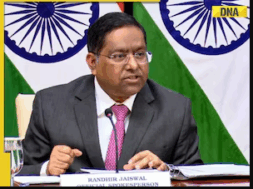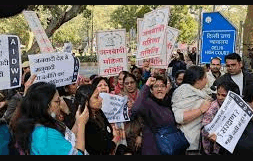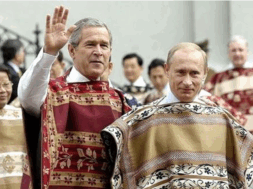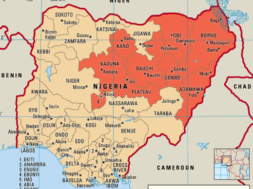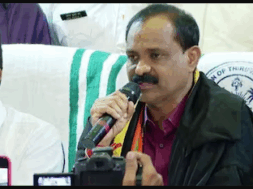
SC Allows AMU to Maintain Minority Status till a Three-Judge Bench Decide the Issue
Manas Dasgupta
NEW DELHI, Nov 8: The Supreme Court on Friday overturned a 1967 judgement that had rejected the minority status of the Aligarh Muslim University but left it to a yet to be constituted three-judge bench to decide whether the institution fulfil the criteria set by the apex court to be continued to be granted the minority status.
A seven-judge Constitution bench of apex court headed by the Chief Justice of India DY Chandrachud ruled 4:3 to overturn the key 1967 Constitution Bench decision which held that a minority community cannot claim to have established an educational institution if it was created by a statute. The majority judgment authored by the Chief Justice was based on petitions seeking minority status to the Aligarh Muslim University.
The top court was pronouncing its verdict on a legal question if the AMU had a minority status under Article 30 of the Constitution which empowers the religious and linguistic minorities to establish and administer educational institutions.
Chief Justice Chandrachud, for whom Friday was the last working day before he retires on Sunday, said an institution established by a minority community was indeed a minority educational institution. Justices Surya Kant, Dipankar Datta and SC Sharma were in the minority.
A five-judge Bench, in S Azeez Basha versus Union of India case in 1967, had held that AMU was a central university and cannot be considered a minority institution. The five-judge Bench had held that the varsity was neither established nor administered by the Muslim minority, and cannot claim protection under Article 30(1) of the Constitution. Article 30(1) upholds the right of religious and linguistic minorities to establish and administer their own educational institutions.
“Azeez Basha’s conclusion, that an educational institution is not established by a minority community if it derives its legal character through a statute, is overruled,” Chief Justice Chandrachud, who read out the majority judgement also on behalf of Justices Sanjiv Khanna (who will be the next Chief Justice), JB Pardiwala, and Manoj Misra, held. Three other judges on the bench Justices Surya Kant, Dipankar Datta, and SC Sharma, delivered three dissenting views.
The minority status of the AMU, established in 1875, was restored by the Parliament through the AMU (Amendment) Act in 1981. In January 2006, the Allahabad High Court had however struck down the provision of the 1981 law by which the university was accorded the minority status. The issue was referred to a seven-judge Bench in 2019.
The bench, led by Chief Justice DY Chandrachud had earlier reserved its verdict on February 1. Reading for the majority, the Chief Justice underlined the importance of identifying the university’s actual point of origin – its genesis – to establish its minority status.
Because AMU had been ‘incorporated’ by imperial legislation – it was founded in 1875 as the Muhammadan Anglo-Oriental College and converted to a university by the British Raj in 1920 – does not mean it was not ‘established’ by members of a minority community, the court said.
A key point is that the court said it was not necessary for an institution to be established only for the benefit of a minority community, or for its administration to rest with members of that community. Minority institutions may also wish to emphasise secular education, it noted.
The test, the majority ruled, is to see if the administrative structure was in line with the claimed minority character of the institution, in this case the AMU. The court also said the government could regulate minority educational institutions as long as it did not infringe on the character of such institutes.
Among the dissenting judges, Justice Datta ruled the AMU was not a minority institution, while Justice Sharma noted a minority community should control institutions serving its peoples but with no interference. They must, however, also give its students the option of a secular education, he said.
Under Article 30 of the Constitution – which empowers religious and linguistic minorities to establish and administer educational institutions – AMU had enjoyed minority status. The Aligarh Muslim University was founded in 1875 and incorporated by imperial law in 1920. A 1951 amendment to that imperial law, the AMU Act, did away with compulsory religious instructions for Muslim students. A second amendment, in 1981, sought to revert to the pre-1951 position but, in the opinion of the Chief Justice-led majority, it did a “half-hearted job.” Then, in 1967, a five-judge Constitution bench – in the S Azeez Basha versus Union of India case – held that since AMU was a central university it could not also be a minority institution.
During arguments, which were held in February, Solicitor General Tushar Mehta and others had said because AMU had, since 1951, received significant funds – over ₹ 5,000 crore between 2019 and 2023 alone- from the central government, it had surrendered its minority character.
And, in 2006, the Allahabad High Court dismissed the 1981 amendment, holding that the AMU was not a minority institution. That matter was then referred to the Supreme Court after the Congress-led UPA government at the centre appealed the 2006 High Court verdict. The university had filed a separate petition against the same ruling.
A three-judge bench led by then Chief Justice Ranjan Gogoi had sent this to the larger bench. Earlier, the BJP-led union government – which said it would withdraw the appeal lodged by its Congress-led predecessor – refused to accept the contentious 1981 amendment and sought to revert to the top court’s 1967 verdict, referring also to the issue of AMU using government funds.
In his majority opinion, Chief Justice Chandrachud observed that minority institutions were established with the goal to preserve the cultural fabric of the community. The state regulation of minority institutions was permissible, but it must not infringe on the minority character of the institution.
Chief Justice Chandrachud observed that it was not necessary that an educational institution should have been established for the purpose of the minority community alone. It must have been only “predominantly” for the benefit of the community. The fact whether an institution was established for the purpose of preserving the cultural fabric of the particular community had to be discerned from primary sources of information like the documents of the formation of the university, letters, speeches, assets involved to establish the institution, the steps taken to implement the idea at the time of its creation, etc.
The majority judgment said an institution did not lose its minority character merely because the administration was no longer vested with the community. The very purpose of Article 30(1) of the Constitution was to grant special rights on the administration of a minority institution as a consequence of its establishment by a minority community. The consequence cannot be converted into a pre-condition, Chief Justice Chandrachud reasoned.
“The right to administer is guaranteed to minority education institutions to enable them to preserve sufficient autonomy to model the institutions according to the educational values which the community wishes to emphasise. It is not necessary that the purpose can only be implemented if persons belonging to the community helm the administrative affairs… This is so particularly if the minority institution may wish to emphasise on secular education,” Chief Justice Chandrachud wrote.
The court returned the case to the Regular Bench to examine the question of minority status of AMU on the basis of the seven-judge Bench on Friday.
In its written submissions during the hearing, the Centre had contended that AMU cannot be considered a minority institution given its “national character.” The government had said AMU was not and cannot be a university of any particular religion or religious denomination. It said a university declared as an institution of national importance cannot be a minority institution.
The university, on the other hand, had contended that it was established by the Muslim community for educating and empowering the community.
In their dissenting judgements Justice Dipankar Datta said the AMU was not a minority institution and did not deserve the minority status. He ruled that the majority opinion puts down a dangerous proposition. Justice SC Sharma said the Constitution does not permit any preferential treatment to minority institutions vis-a-vis other institutions. “What is needed is bringing minority educational institutions on par with other institutions,” the judge said.




